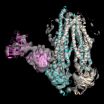(Press-News.org) Washington D.C., November 4, 2014 – A Clinical Perspectives article published in the November 2014 issue of the Journal of the American Academy of Child and Adolescent Psychiatry proposes a tool to empower stakeholders, guide caregivers, and provide a rationale for advocates, when considering the systems of support offered to people with an autism spectrum disorder (ASD).
Organizations such as the American Academy of Child and Adolescent Psychiatry, the European Society for Child and Adolescent Psychiatry, the International Association for Child and Adolescent Psychiatry and Allied Professions, and Autism Europe have long stressed the need for an effective evidence-based support approach, which not only promotes the active participation of the ASD individual, but also includes his or her family, and community.
With the hope of providing a framework for clinical practice and global advocacy, Dr. Joaquin Fuentes, of Policlínica Gipuzkoa, San Sebastián, Spain, has developed a set of brief 'tips' to guide such an approach and which he anticipates will be accepted in many countries.
Dr. Fuentes said of his article, "We see in our nations a radical evolution in the development of services to people with ASD. We consider them full citizens, who must receive personalized support in within their communities. We must pay attention to their hopes and dreams when planning for their futures, to empower them and their legal representatives to make decisions, and to favor their pursuit of self-determination, satisfying relationships, and full inclusion, in their search for quality of life."
Pointing to a growing movement in Europe for making information easily understandable as an essential mechanism to protect individual human rights and foster citizen participation, Dr. Fuentes wrote the 'tips' in straightforward, first-person language In order to ensure representation, early drafts were reviewed by a self-support group of young persons with ASD, and the Board of Families from the Gipuzkoa Autism Society, the largest publicly supported autism community program in southern Europe, where Dr. Fuentes serves as a Research Consultant.
Those consulted discussed and strongly endorsed the document, adding a few points and valuing that the Ten Tips were to be facilitated to a multilingual community. Towards this end, the ten points outlined in the article are made available as online-only supplemental material in Basque, French, and Spanish.
Dr. Fuentes directs the Child and Adolescent Psychiatry Unit at Policlínica Gipuzkoa, in Donostia / San Sebastián and is a member of the Steering Committee of Dr. Paramjit Joshi's AACAP Presidential Initiative.
The article "Autism Spectrum Disorders: Ten Tips to Support Me" by Joaquin Fuentes, MD, appears in the Journal of the American Academy of Child and Adolescent Psychiatry, Volume 53, Issue 11 (November 2014), published by Elsevier.
INFORMATION:
This article was endorsed by the Gipuzkoa Autism Society in Donostia / San Sebastián, Basque Country, Spain on June 20, 2014.
Full text of the article is available to credentialed journalists upon request; contact Mary Billingsley at +1 202 587 9672 or mbillingsley@jaacap.org. Journalists wishing to interview the authors may contact Joaquin Fuentes, MD, at fuentes.j@telefonica.net
All articles published in JAACAP are embargoed until the day they are published as in press corrected proofs online at http://jaacap.org/inpress. Articles cannot be publicized as in press accepted manuscripts. Contents of the publication should not be released to or by the media or government agencies prior to the embargo date.
About JAACAP
Journal of the American Academy of Child and Adolescent Psychiatry (JAACAP) is the official publication of the American Academy of Child and Adolescent Psychiatry. JAACAP is the leading journal focusing exclusively on today's psychiatric research and treatment of the child and adolescent. Published twelve times per year, each issue is committed to its mission of advancing the science of pediatric mental health and promoting the care of youth and their families.
The journal's purpose is to advance research, clinical practice, and theory in child and adolescent psychiatry. It is interested in manuscripts from diverse viewpoints, including genetic, epidemiological, neurobiological, cognitive, behavioral, psychodynamic, social, cultural, and economic. Studies of diagnostic reliability and validity, psychotherapeutic and psychopharmacological treatment efficacy, and mental health services effectiveness are encouraged. The journal also seeks to promote the well-being of children and families by publishing scholarly papers on such subjects as health policy, legislation, advocacy, culture and society, and service provision as they pertain to the mental health of children and families.
About Elsevier
Elsevier is a world-leading provider of information solutions that enhance the performance of science, health, and technology professionals, empowering them to make better decisions, deliver better care, and sometimes make groundbreaking discoveries that advance the boundaries of knowledge and human progress. Elsevier provides web-based, digital solutions — among them ScienceDirect, Scopus, Elsevier Research Intelligence and ClinicalKey — and publishes nearly 2,200 journals, including The Lancet and Cell, and over 25,000 book titles, including a number of iconic reference works.
The company is part of Reed Elsevier Group PLC, a world-leading provider of professional information solutions in the Science, Medical, Legal and Risk and Business sectors, which is jointly owned by Reed Elsevier PLC and Reed Elsevier NV. The ticker symbols are REN (Euronext Amsterdam), REL (London Stock Exchange), RUK and ENL (New York Stock Exchange).
The sun emitted a mid-level solar flare, peaking at 5:40 p.m. EST on Nov. 3, 2014. NASA's Solar Dynamics Observatory, which watches the sun constantly, captured an image of the event. Solar flares are powerful bursts of radiation. Harmful radiation from a flare cannot pass through Earth's atmosphere to physically affect humans on the ground, however -- when intense enough -- they can disturb the atmosphere in the layer where GPS and communications signals travel.
To see how this event may affect Earth, please visit NOAA's Space Weather Prediction Center at http://spaceweather.gov, ...
In nature, the right amount of death at the right time might actually help boost a species' population density, according to new research that could help in understanding animal populations, pest control and managing fish and wildlife stocks.
In a paper in the journal Trends in Ecology and Evolution, a Princeton University researcher and European colleagues conclude that the kind of positive population effect an overall species experiences from a loss of individuals, or mortality, depends on the size and developmental stage of the creatures that die.
If many juveniles ...
Disturbances in the early stages of brain growth, such as preterm birth – when many of the brain's structures have not yet fully developed – appears to affect the brain's neuro-circuitry, which may explain premature babies' higher risk of neurodevelopmental disorders including ADHD and autism spectrum disorder.
Researchers led by Natasha Lepore, PhD, of The Saban Research Institute of Children's Hospital Los Angeles, have located significant alterations to specific surface regions of the brain. Described in a study published online this week by the journal ...
WEST LAFAYETTE, Ind. – Researchers are close to commercializing a new type of medical imaging technology that could diagnose cardiovascular disease by measuring ultrasound signals from molecules exposed to a fast-pulsing laser.
The system takes precise three-dimensional images of plaques lining arteries and identifies deposits that are likely to rupture and cause heart attacks, said Ji-Xin Cheng (pronounced Jee-Shin), a professor in Purdue University's Weldon School of Biomedical Engineering and Department of Chemistry.
The imaging reveals the presence of carbon-hydrogen ...
Hot flushes are one of the most distressing conditions faced by women who have been treated for breast cancer, but they are not being adequately addressed by healthcare professionals and some women consider giving up their post cancer medication to try and stop them, a new study has shown.
More than 70 per cent of women who have had breast cancer experience menopausal problems, and hot flushes in particular, which are among the most prevalent and potentially distressing problems following breast cancer treatment. These can also be long lasting, persisting for more than ...
This news release is available in German.
"On the one hand, ABC transporters causes diseases such as cystic fibrosis, while on the other hand they are responsible for the immune system recognising infected cells or cancer cells," explains Professor Robert Tampé from the Institute for Biochemistry at the Goethe University. The considerable medical, industrial and economic significance of ABC transporters is also based on the fact that they cause bacteria and other pathogens to become resistant to antibiotics. Likewise, they can help cancer cells to defend themselves ...
CORAL GABLES, Fla. (November 4, 2014) — Think about the way our bodies are assembled during early development and ask: How do neighboring cells know that they are supposed to become a nerve or a bone cell and how do these tissues find the correct place and alignment? Researchers at the University of Miami (UM) are answering these crucial questions.
In a new study, UM researchers describe the signaling systems that tissues use to communicate with their surrounding neighbors, at the head-trunk region. Their discovery may have important implications for the treatment ...
Sublingual misoprostol is inferior to intramuscular oxytocin for the prevention of postpartum hemorrhage (PPH) in women undergoing uncomplicated birth at a regional hospital in Uganda, according to trial results published in PLOS Medicine. The randomized non-inferiority trial, conducted by Esther Cathyln Atukunda at the Mbarara University of Science and Technology, Uganda, and colleagues, showed that PPH incidence in the misoprostol arm exceeded that in the oxytocin arm by 11.2% (95% confidence interval 6.44%-16.1%).
PPH is responsible for 25–30% of maternal deaths. ...
In an analysis of the 2003–2010 MarketScan US database, Rakesh Bhattacharjee and coauthors (University of Chicago, Chicago, Illinois) compared hospital admissions and prescriptions for children with asthma who underwent adenotonsillectomy before and after surgery to determine whether their asthma control improved (based on ICD-9-CM and CPT codes, as well as drug prescriptions) in the year after compared with the year before surgery. They also compared the children with children with asthma who did not undergo adenotonsillectomy who were the same age and sex and lived ...
Surgical removal of the tonsils and adenoids in children suffering from sleep apnea is associated with decreased asthma severity, according to the first large study of the connection, published in the journal PLOS Medicine.
Researchers from the University of Chicago found that in the first year after the operation, children who had the surgery had a 30 percent reduction in acute asthma exacerbations and a 38 percent decrease in acute status asthmaticus—a medical emergency.
They also found pediatric patients who received the surgery had a 36 percent reduction ...


